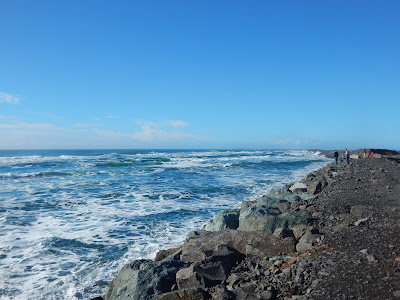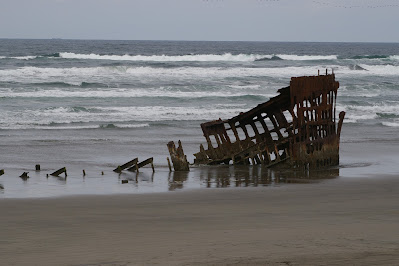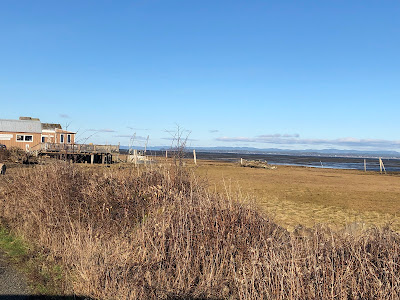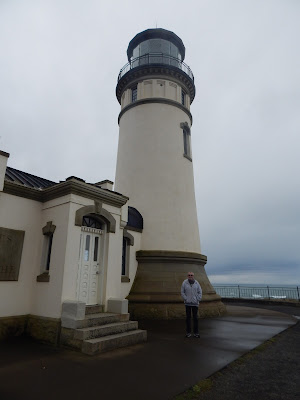So the day was absolutely beautiful so we decided to head out to Cannon Beach. As we were crossing the bridge into Astoria there was a car liner boat coming up the river. We figure it was heading up the River to Portland to pick up automobiles to head overseas. When we came back it was no where to be seen so that's why we figured it was further up the river.
So in Astoria across from the Maritime Museum there is a fish and chips place that cooks Albacore Tuna Fish and Chips. They are only open from Wednesday to Sunday and if the weather is bad they don't open up. We have tried a few times to go but never made it. So today was the day. Len and decided to split an order which was just the perfect amount for us. Tuna is very different from cod or halibut, it has a very meaty texture. It is not really flaky, it is more like eating a piece of meat. If you every get the chance to try tuna in your fish and chips I highly recommend it.
From here we headed to Cannon Beach. This is the location of haystack rock, probably one of the most photographed rocks on the Oregon Coast. We were hoping to find some rocks but all the beaches in the area were short on gravel, the sand has taken over, however there were lots of people around flying kites, building sand castles and just generally enjoying the day.
This was the sand dune we found just as we were walking up to the beach








































.jpg)







